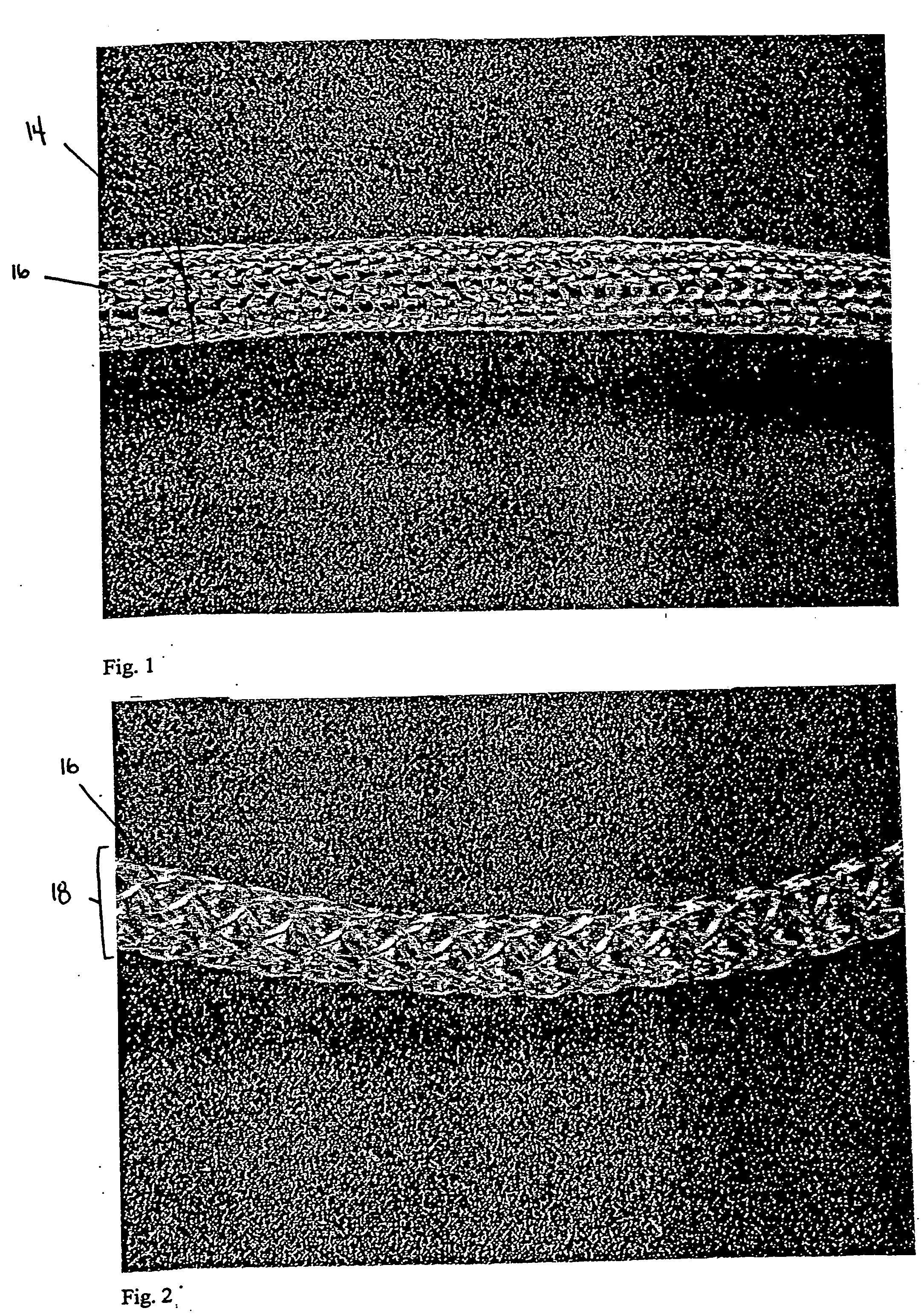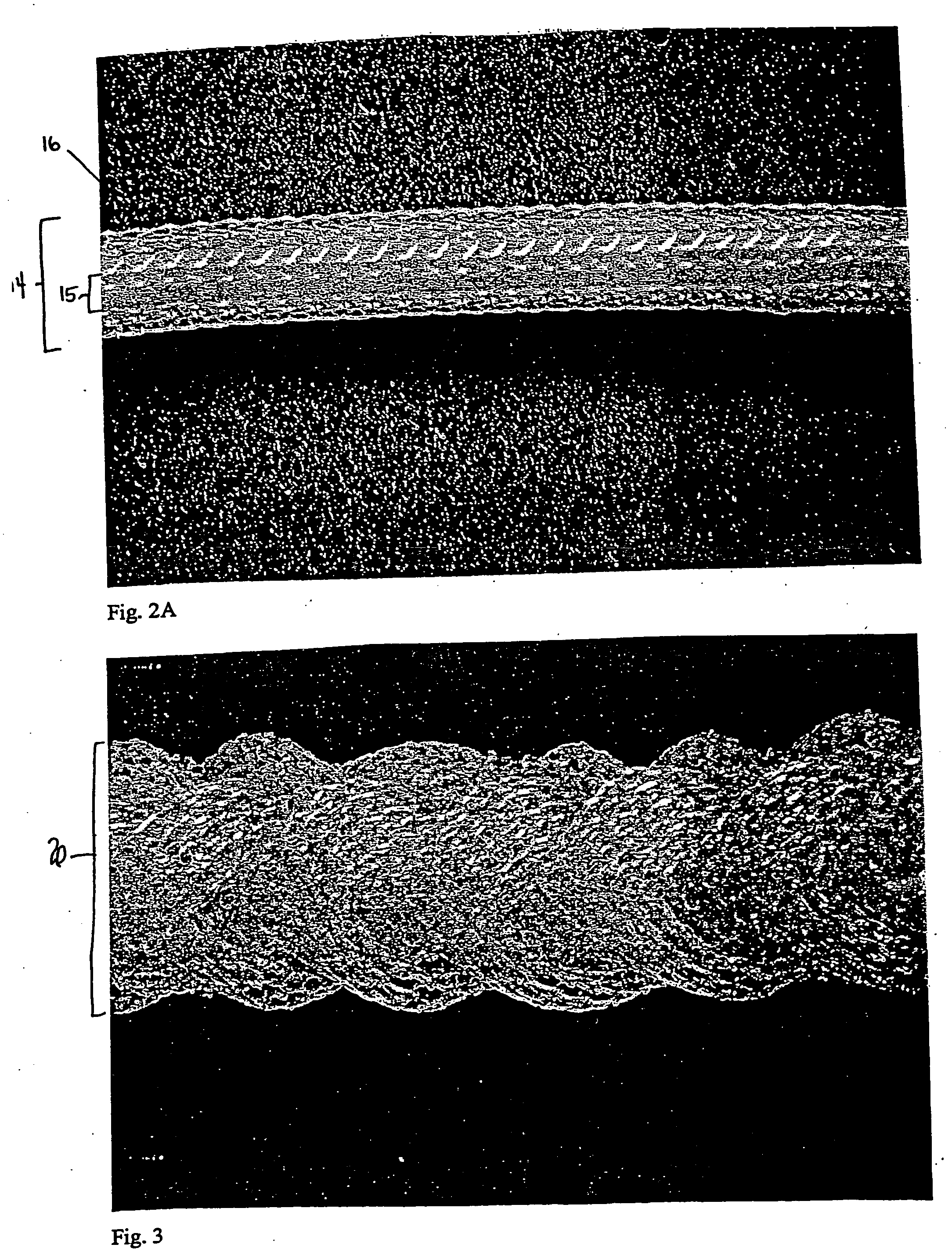[0014] The present invention features implants (e.g., three-dimensional
soft tissue implants) that can be used to treat bodily defects (whether arising congenitally or as a result of a
disease, disorder, condition, or surgical procedure) or to remodel tissue (following, for example, a
traumatic injury (such as a burn) or for cosmetic purposes). In addition, the invention features methods for making the implants and kits (e.g., sterile kits that include an implant and, optionally, instructions for its application, and which can facilitate the surgical procedure in which the implant is used). In one embodiment, the implants have a
low density (i.e., a low weight:volume ratio), a low
implant surface area ratio (the
fiber or material surface area divided by the material area), and open pores, which may permit
tissue ingrowth following implantation into a patient (e.g., a
human patient). The surface
area ratio can range from about 0.4 to about 4.0. For example, the surface
area ratio can be approximately 1.0, 2.0, or 3.0 (e.g., 0.6, 0.8, 1.0, 1.2, 1.4, 1.6, 1.8, 1.9, 2.0, 2.1, 2.2, 2.4, 2.6, 2.8, or 3.0; the implants of the invention can also be described as having a surface area ratio of less than 3.0), the
surface area to volume ratio can range from about 2.0 to 4.0. For example, the
surface area to volume ratio can be approximately 3.0 (e.g., 2.0, 2.1, 2.2, 2.4, 2.6, 2.8, 3.0, 3.1, 3.2, 3.4, 3.6, 3.8, or 4.0), and the pore size can be approximately 50-2000μ (e.g., 50, 100, 200, 300, 400, 500, 600, 700, 800, 900, 1000, 1100, 1200, 1300, 1400, 1500, 1600, 1700, 1800, 1900, or 2000μ; preferably, the
pore diameter is measured before implantation, when the implant is in a natural, resting position). Thus, and as further described below, the methods of the invention can produce implants that are
highly porous and of a low material content, yet strong enough to modify for
repair tissue.
[0032] The implants of the invention may have one or more of the following advantages. They can be configured to allow or stimulate
fibrosis (or fibrotic tissue ingrowth) in an organized pattern (tissue ingrowth under these circumstances may provide additional support to the previously defective tissue); they can have a reduced surface area and / or density (reduced with respect to present implants) that minimizes the
inflammatory response and
infection risk to the patient; they can have a degree of compression resistance that minimizes shrinkage and
erosion of the implant into adjacent tissue structures and reduces the likelihood of collapse after
insertion; they can have stress-strain properties that are compatible with the mechanical properties of the tissues they contact in the patient's body and therefore promote healing and minimize discomfort; they can be constrained (e.g., held within a biocompatible (e.g., non-toxic) tube or similar outer structure) and have a profile low enough to facilitate
insertion and deployment within a patient in a minimally invasive fashion; they can be biodegradable or bioresorbable; and they can contain an onlay or anchor that can be secured in position in a short period of time. The anchor and three-dimensional
soft tissue implant combination create a frictional force with the surrounding tissue to prevent migration. Implants that are less prone to migrate from the site of implantation can be used with fewer, if any, staples or sutures (it is expected that this will reduce complications associated with attachment to the surrounding tissues). Moreover, the implants of the invention can be economical to manufacture and highly reproducible, durable, and efficient.
 Login to View More
Login to View More  Login to View More
Login to View More 


